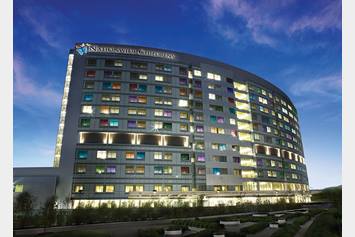Alveolar Cleft
An alveolar cleft is a birth defect that affects the mouth and nose. It happens when the bones in the upper jaw don’t form properly.
What Is an Alveolar Cleft?
An alveolar cleft is a cleft of the upper gum line. It most often accompanies and cleft lip and/or cleft palate.
Reasons to repair an alveolar cleft include:
- Allow permanent teeth to descent into the cleft
- Provide stability to the upper jaw
- Provide support to the nose
What Are the Signs and Symptoms of Alveolar Cleft?
An alveolar cleft is a gap in the gum line. In a one-sided cleft, there will be one gap in the gum line. In a two-sided cleft, there will be two gaps in the gum line.
Alveolar clefts can have malformed or abnormal teeth growing through or near them.
How Is Alveolar Cleft Diagnosed?
All newborns undergo an examination of the mouth at birth. When a diagnosis of cleft lip and/or palate is made, we also check the alveolus, or upper gum line, for a cleft.
It is important for all patients with a confirmed or suspected cleft to be referred to a Cleft Lip and Palate Center for interdisciplinary team evaluation. The team typically includes a speech-language pathologist with specialized training in cleft palate, a surgeon with expertise in cleft palate and alveolar cleft surgery.
Additional team members may also assess the patient, based on the child’s specific needs, including:
- Dentist
- Orthodontist
- Otolaryngologist
- Psychologist
- Geneticist
- Audiologist
How Is Alveolar Cleft Treated?
Around the age of 5, preparations begin for bone grafting of the alveolar cleft. Preparation may include dental X-rays and low radiation CT scans.
When the orthodontist and the surgeon deem the patient ready for a bone graft, usually between the ages of 6 and 10, the bone graft is performed. The operation involves opening up the alveolar cleft, creating a pocket for bone placement, harvesting bone from the hip, and placing the bone in the alveolar cleft. Patients usually stay in the hospital for one night.
Three to six months after bone graft, new x-rays or a low radiation CT scan are obtained in order to check the “take” of the bone graft in the alveolar cleft.


